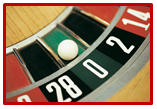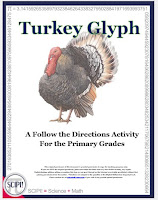Dictionary.com defines homework as
"schoolwork assigned to be done outside the classroom (distinguished from classwork)", but is homework beneficial? Teaching on the college level, I see many benefits to those students who have been required to complete
real homework in high school. Here are just a few.
1) Homework can improve student achievement. Studies show that homework improves student achievement in terms of better grades, test results, and the likelihood of attending college.
2) Homework helps to reinforce learning and to develop good study habits and life skills. Homework assists students in developing key skills that they will use throughout their lives, such as accountability, self-sufficiency, discipline, time management, self-direction, critical thinking, and independent problem-solving. Homework assignments given to students actually help students prepare for getting a higher education degree. In fact, the more time a student spends honing his skills, the higher his chances are to enter the University of his dreams or later acquire the work he always wanted to do.
3) Homework can make students more responsible. Knowing that each homework assignment has a specific deadline that cannot be postponed makes students more responsible. It requires grit (perseverance), teaches them time management and causes them to prioritize their time for academic lessons.
As you read this list, I know there are many of you, especially those who have small children or teach younger children, who disagree. I am not here to argue about whether homework is appropriate in the lower grades, but I do want to advocate
real homework on the high school level. When I say
real homework here is what I mean.
In high school, students might finish their homework in the hall right before class and still earn a good grade; that just isn't possible in college. Homework may be due on a certain day, but it is acceptable if it is turned late. This typically doesn’t float on the college level. In high school, a student gets to the end of a semester and needs a few more points to pull up a grade because of missing or incomplete assignments; so, the student asks the teacher for extra credit work. Extra credit does not exist on the college level! You do the work you are given when you are given it!
I teach college freshmen, many who are woefully unprepared for the academic rigors and demands that are expected. For every one hour students take in college, they should expect two hours of outside work. In other words, if a student is taking 12 hours, they should expect to spend 24 hours on homework (12 x 2). Of course this formula doesn't always work perfectly, but it is a good starting point. Usually, college freshmen are in disbelief that they are expected to spend so much time on work outside of class. In reality, they should expect to spend as much time on homework in college as they would at a job because college is a full time job!
 |
| Help, we're sinking! |
When I hand out my syllabus, many of my freshmen are astonished when they discover the amount of homework I expect and require them to do (readings, papers, on-line research, projects, etc.) AND to compound the problem, many instructors (including me) expect it to be done and handed in on time! Unfortunately, several students have to test the waters to find out that late papers are not accepted.
For those college students who've had little
real homework in high school compounded by teachers who have allowed it to be turned in late, those students are aboard a sinking ship that is leaking fast! Sadly, those are the 2-3 students who fail my required class and have to retake it the next semester.
So, as you can see, the decision to agree with or disagree with assignments is really up to the student, but also they need to remember that the learning institution they attend has rules in place regarding assignments. And if homework is assigned, then it will need to be completed and handed in on time, or the impact on the final semester grade will certainly be negative.
-----------------------------------------------------------------------------
Want a quicker and easier way to grade math homework? Try one of these two math
rubrics. I still use them on the college level, and they save me a great deal of time!

























